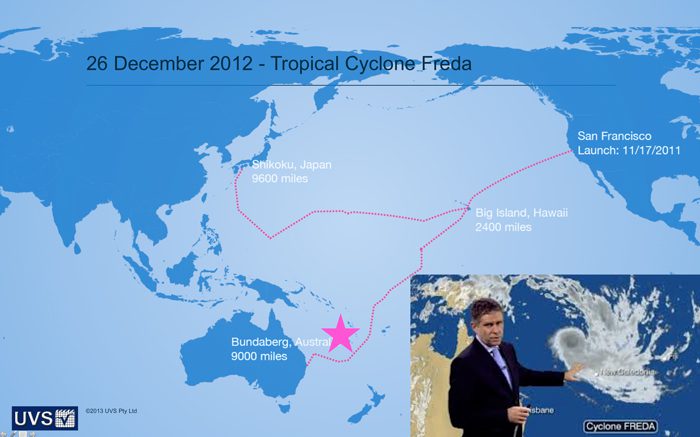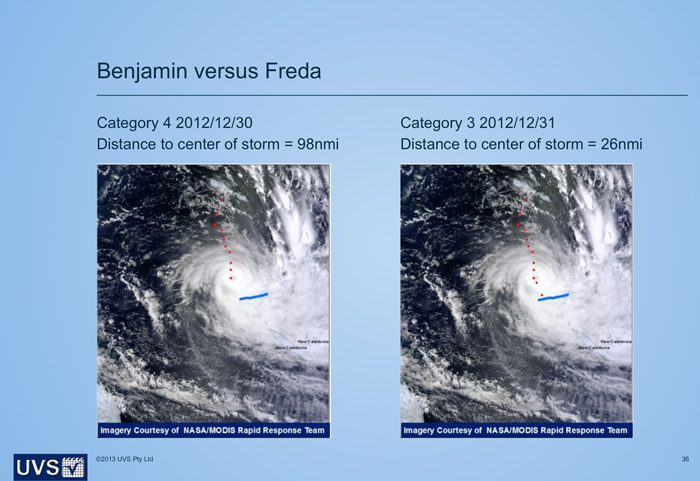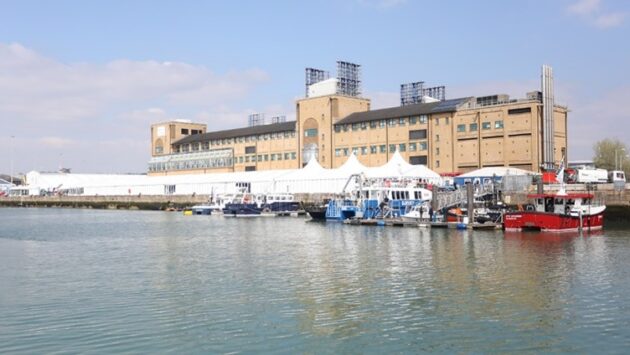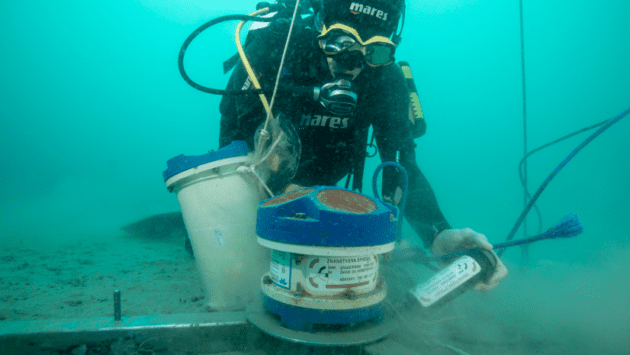Future of Cyclone Monitoring
Tropical Cyclones are massive, complicated weather systems that are poorly understood due to their complexity and the difficulty of gathering data in some of the most extreme conditions on the ocean. But advanced technology like Liquid Robotics’ Wave Glider®, an unmanned ocean robot capable of operating through even the most severe Category 5 storms, can continuously collect and transmit storm intensity data in real time.
Wave Gliders connect the undersea world to air, space and shore through unprecedented monitoring, assessment and protection of the world’s oceans. They have survived 17 hurricanes, cyclones and typhoons. They collect real-time data to aid meteorologists in better modeling and predicting cyclone intensity; a key to improving evacuation preparedness, reducing false alarms and saving lives.
In December 2012 Wave Glider “Benjamin Franklin” encountered Tropical Cyclone “Freda” near to the end of the historic PACX crossing of the Pacific Ocean. Cyclone Freda was a Category 4 cyclone with 150 knot winds and 6m waves. Benjamin successfully transited through the cyclone providing 9 uninterrupted channels of MetOcean data from the eye of the storm.





